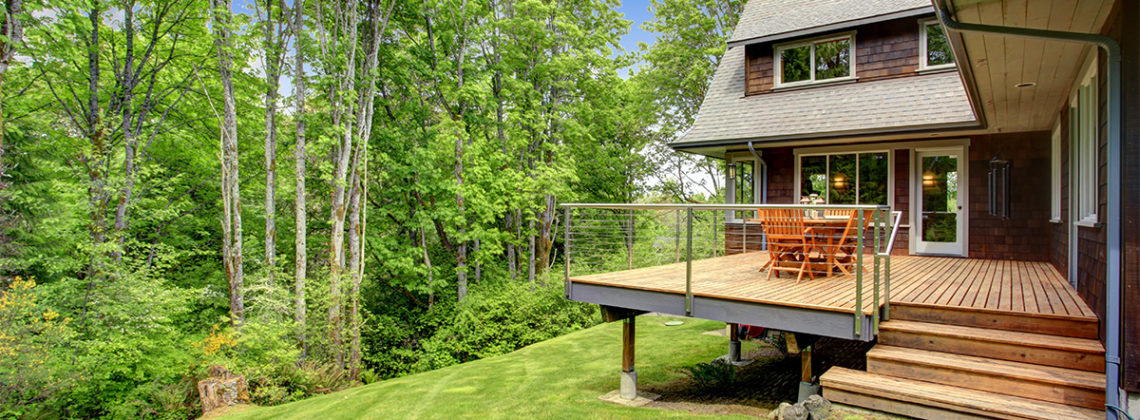
Fire season is a year-round concern for many homeowners, but this is especially true during summer’s long, warm days. Being prepared for fire season can help increase your chance of protecting your property if it is threatened by fire. Here’s how to make your home fire season ready.
Create “Defensible Space”
Keep it lean, green, and mean. Your defensible space is the space that becomes the buffer between your house and the trees, grass, and shrubs that surround it. Use this space to slow, or better yet, stop the spread of a wildfire. Radiant heat can be as dangerous as direct flames, so the wider your defensible space, the better. Here are just a few recommendations:
- Keep your defensible space clear of leaves, twigs, and branches by regularly raking
- Create “fire lines” with sidewalks and driveways
- Keep the height of your lawn below 4 inches by mowing as needed
- Trim tree branches that are lower than 15 feet from the ground
- Request the power company remove branches from power lines near your property
Learn more about Fire Resistant Landscaping
Roof
The most vulnerable part of a home near a wildfire is its roof. Houses with shingle or wood roofs are in greater danger of being destroyed by fire than those homes built with metal, tile, or composition materials. If your home currently has a shingle or wood roof, consider re-roofing with a fire-resistant material.
Cut back branches that hang low over the roof of your house.
Deck
Build your deck with ignition-resistant or non-combustible material if it is within ten feet of your house. According to DeckMagazine.com, the IWUIC and NFPA 1144 specify the use of decking materials that are “non-combustible,” such as steel framing and aluminum decking, or “ignition-resistant,” such as pressure-treated, exterior-rated fire-retardant-treated lumber.
Keep the area beneath your deck clear of combustible material and debris
.How’s your deck holding up? Read more at All Hands on Deck – Deck Safety Month
Windows
Change out single-pane windows as they are vulnerable to the heat of wildfire before it even reaches the home. Once windows break, they allow burning embers into the house and may start fires inside.
Replace single-pane windows with dual-paned windows. Optimally, install dual-paned windows with one pane of tempered glass to reduce the chance of the window breaking during a fire.
Gutters
Keep your rain gutters free of combustible debris.
Patio Cover
Fire-retardant roofing also applies to your patio covering. Replace your patio covering with the same material you would use on your roof.
Your Street Number – Make sure your address is easily read from the street and is not obscured by branches or shrubbery so that the fire department can find your home if necessary.
For more information on how to create defensible space and make your home fire season ready visit ReadyForWildfire.org
